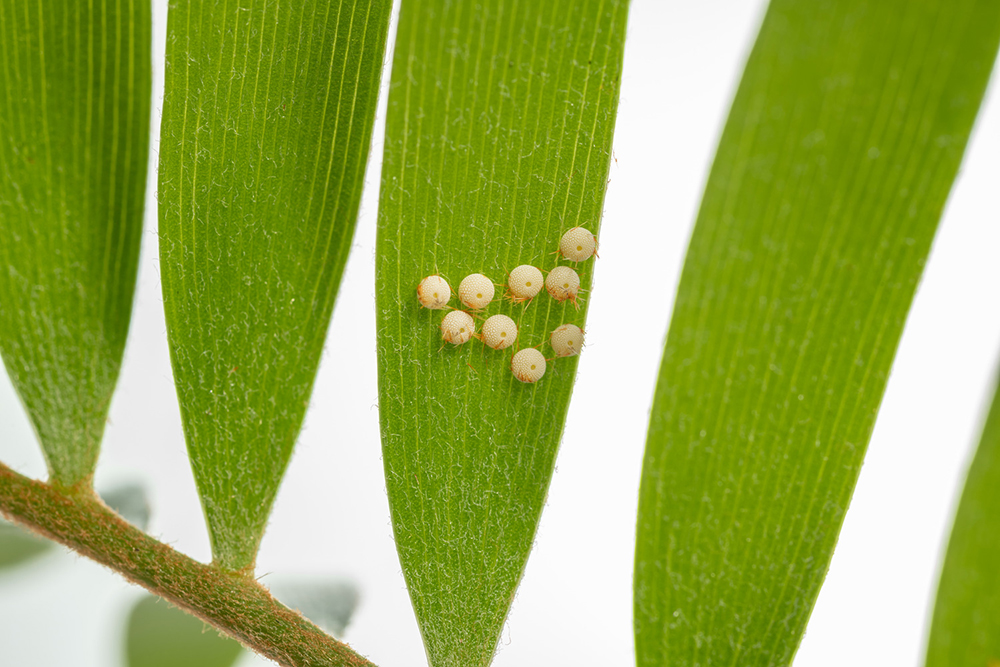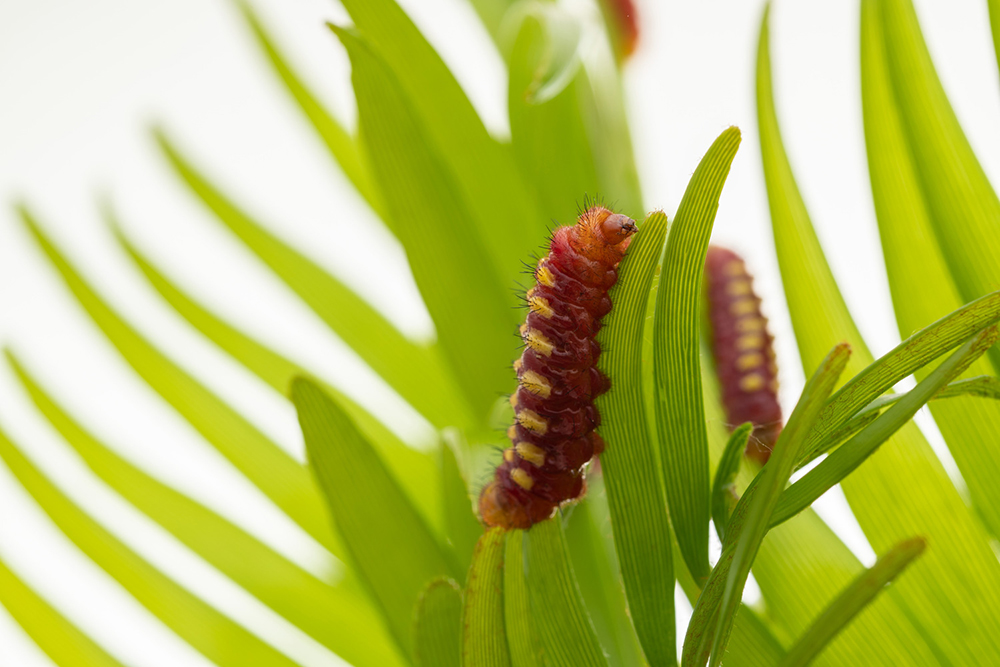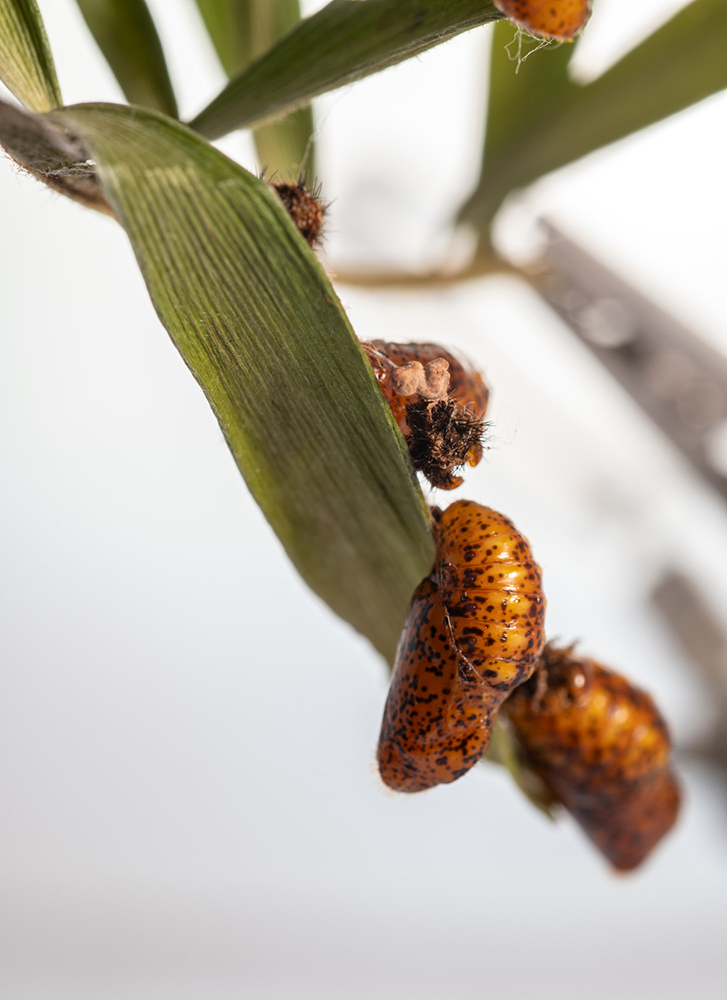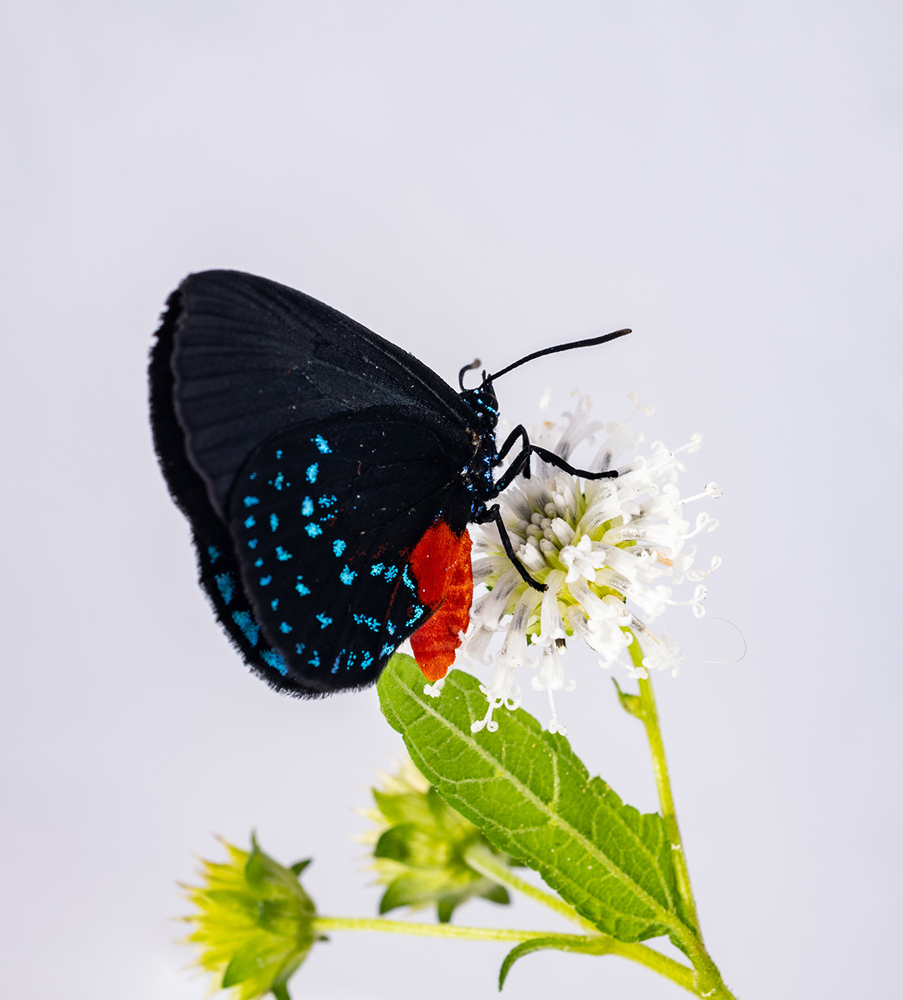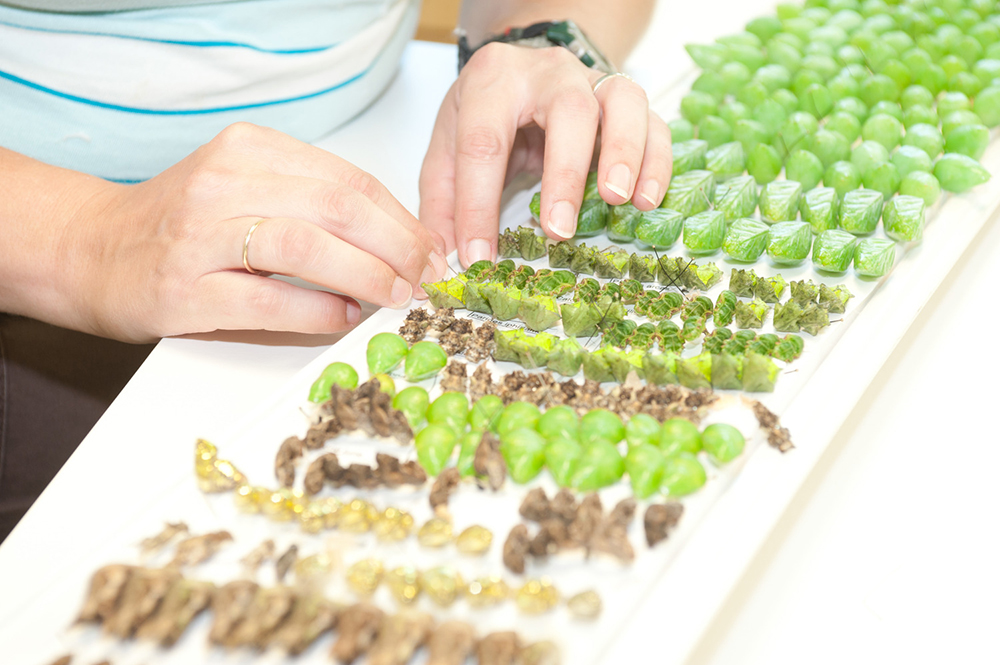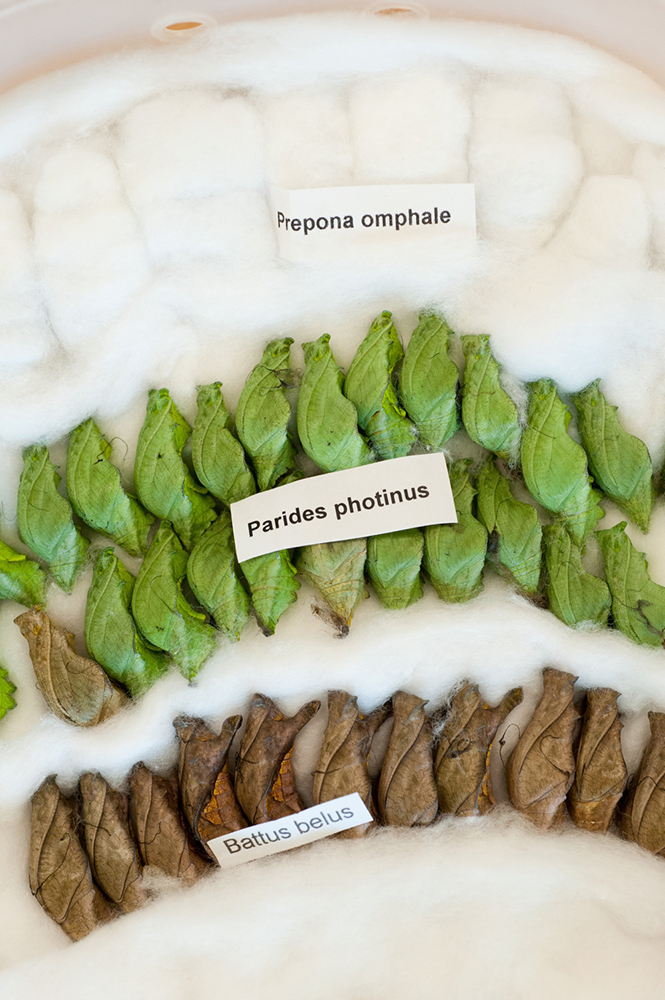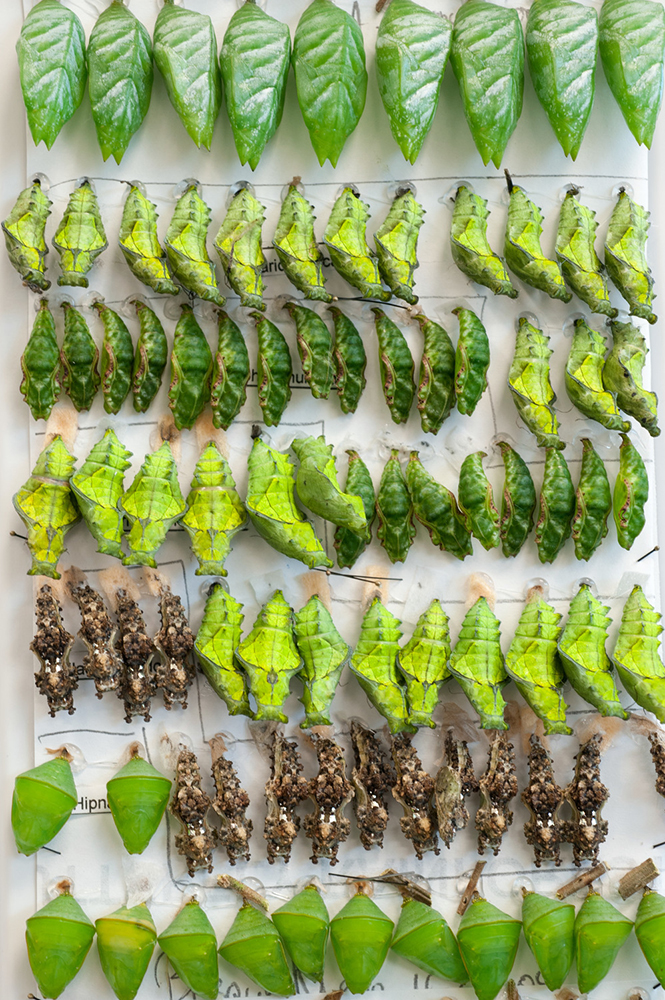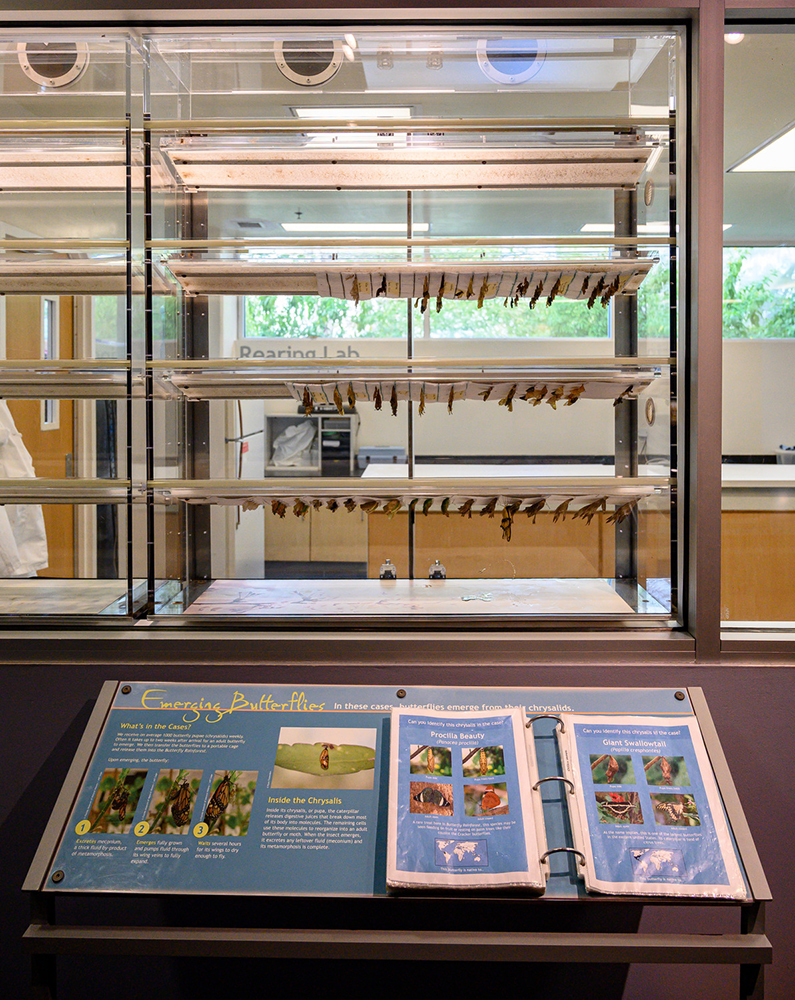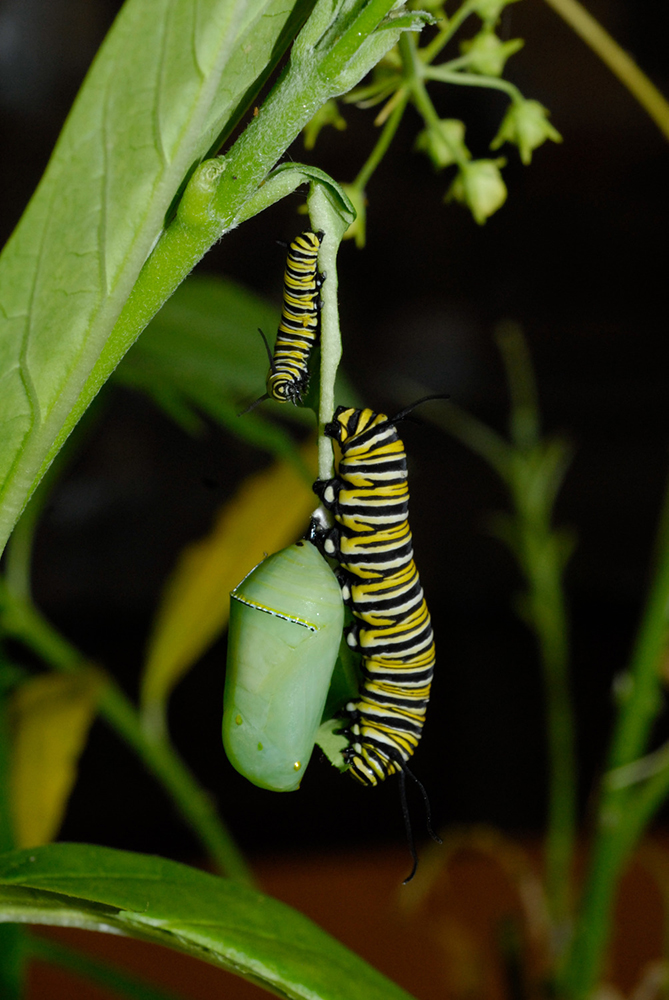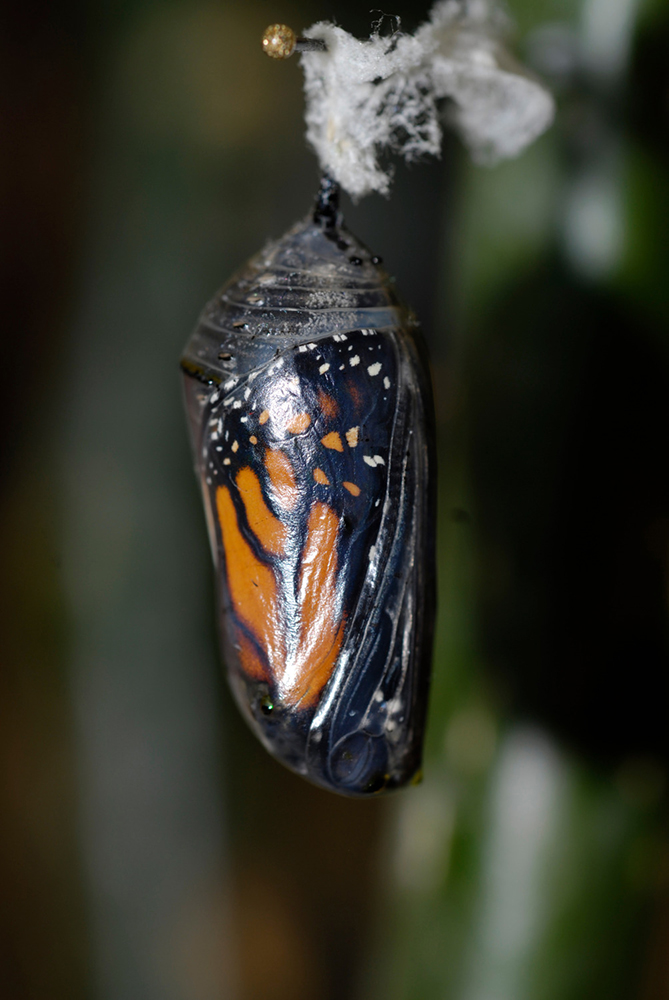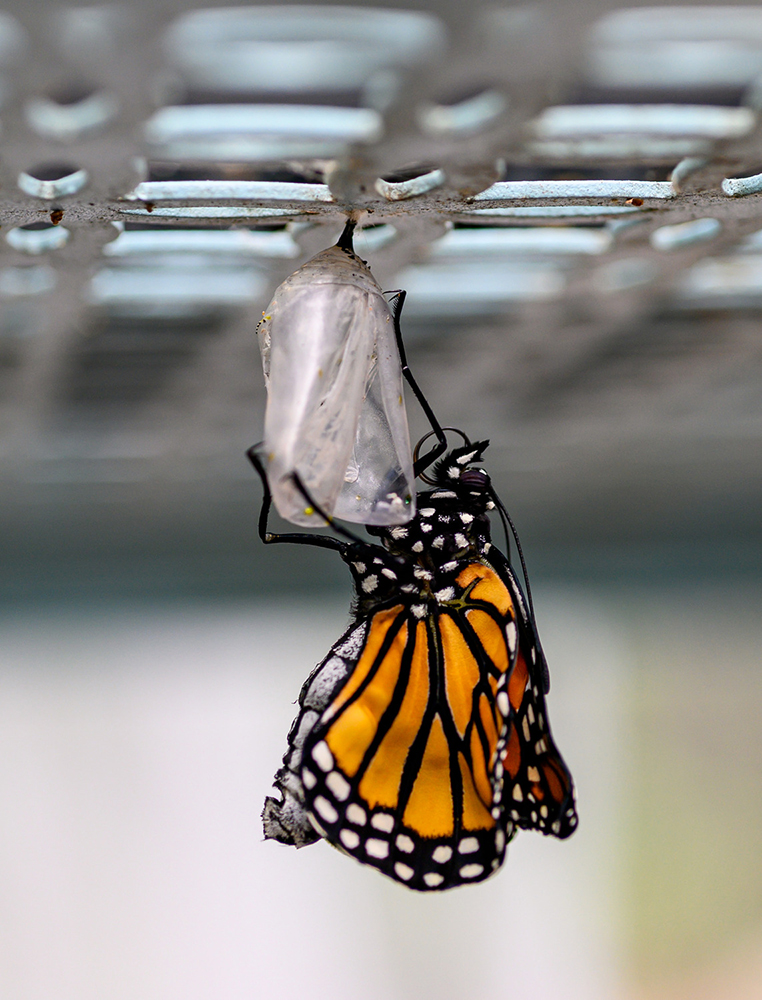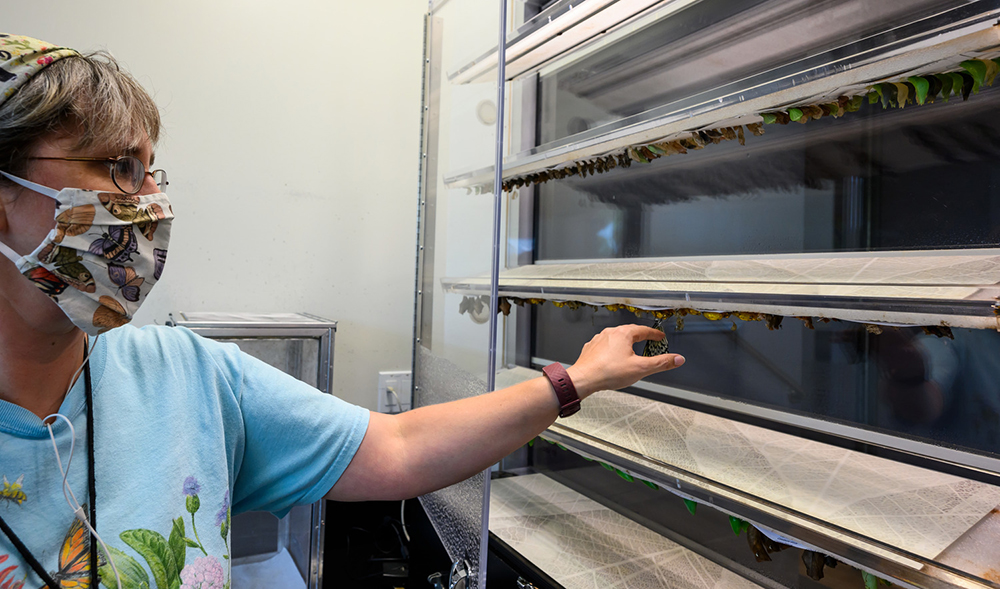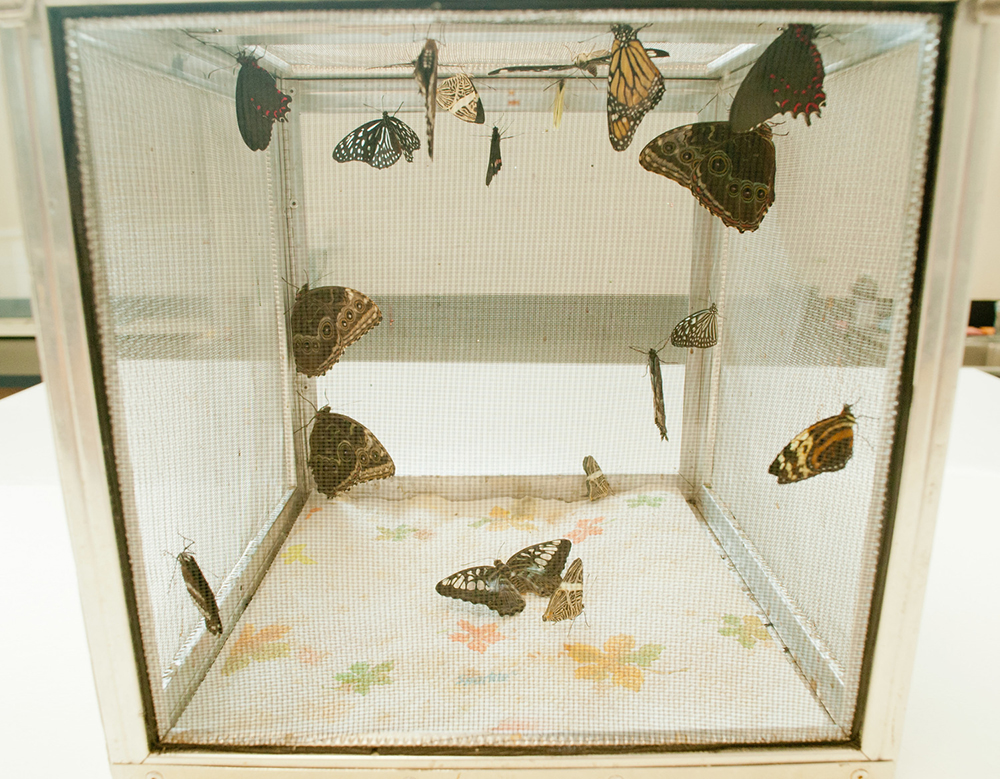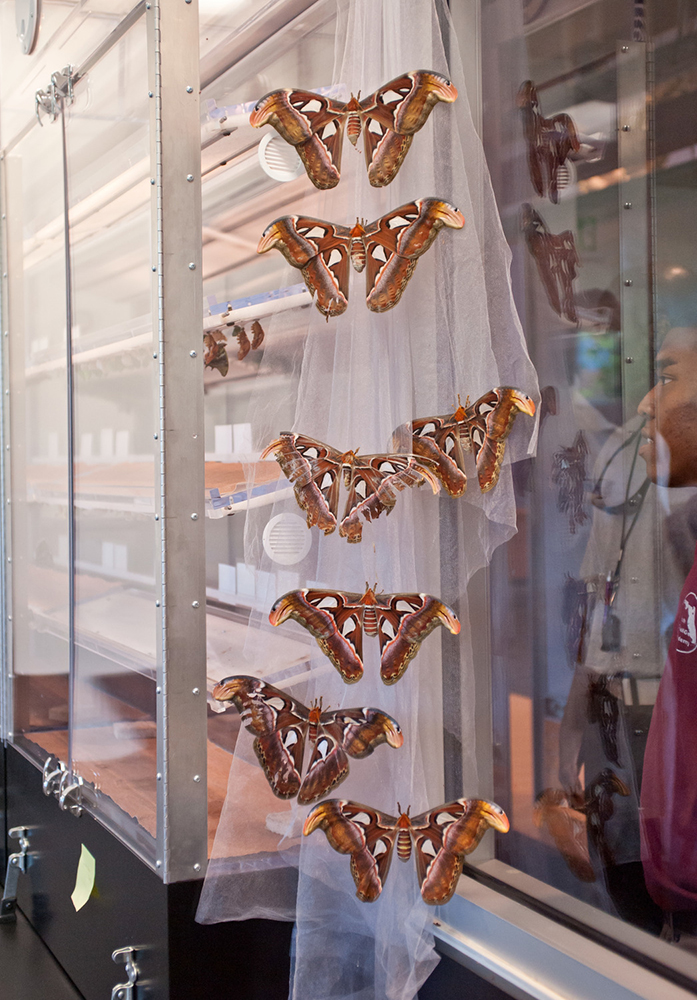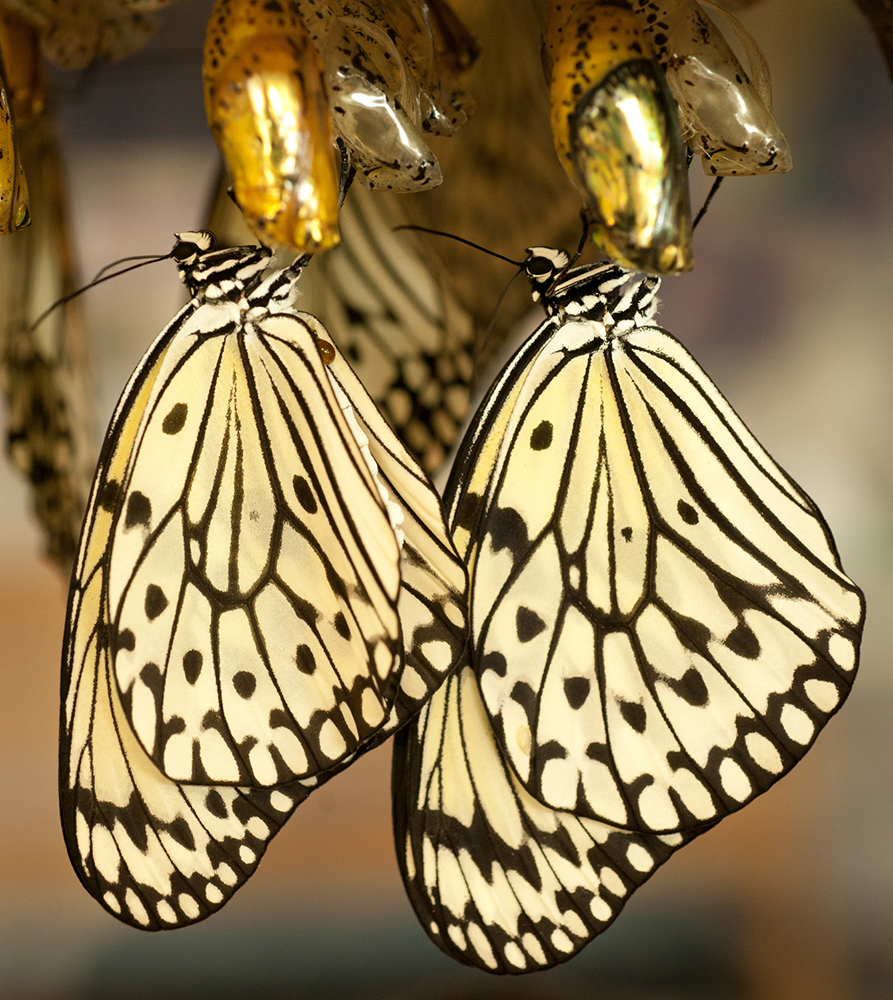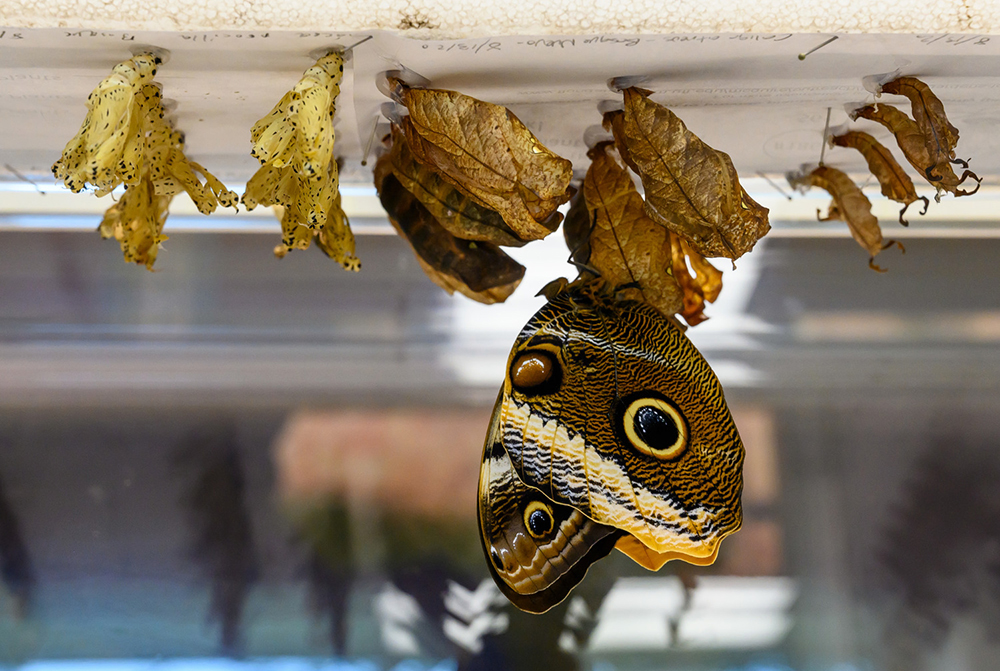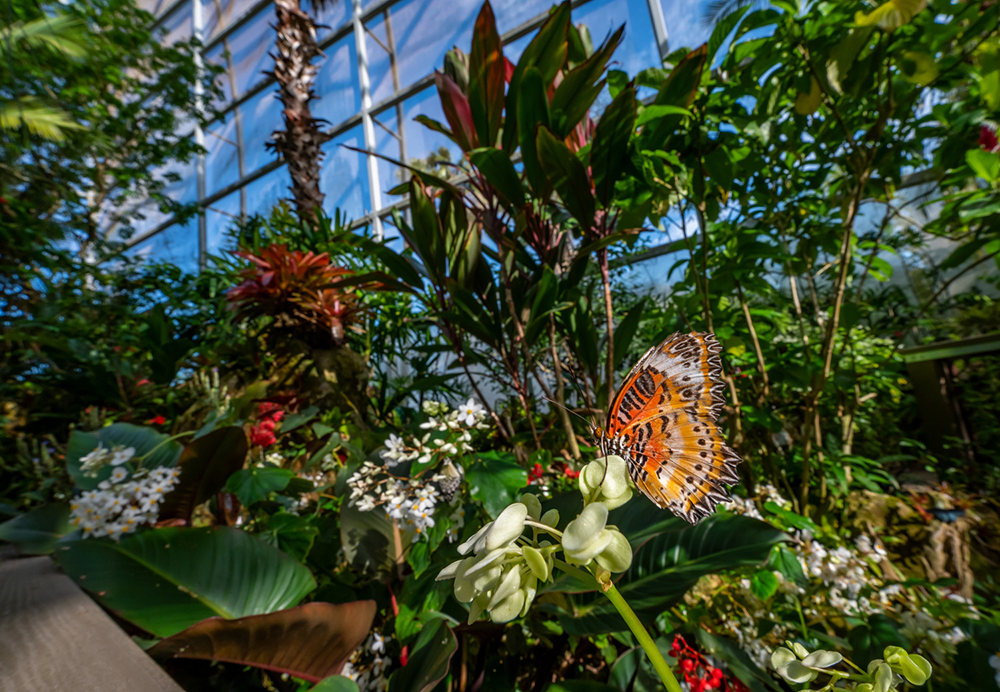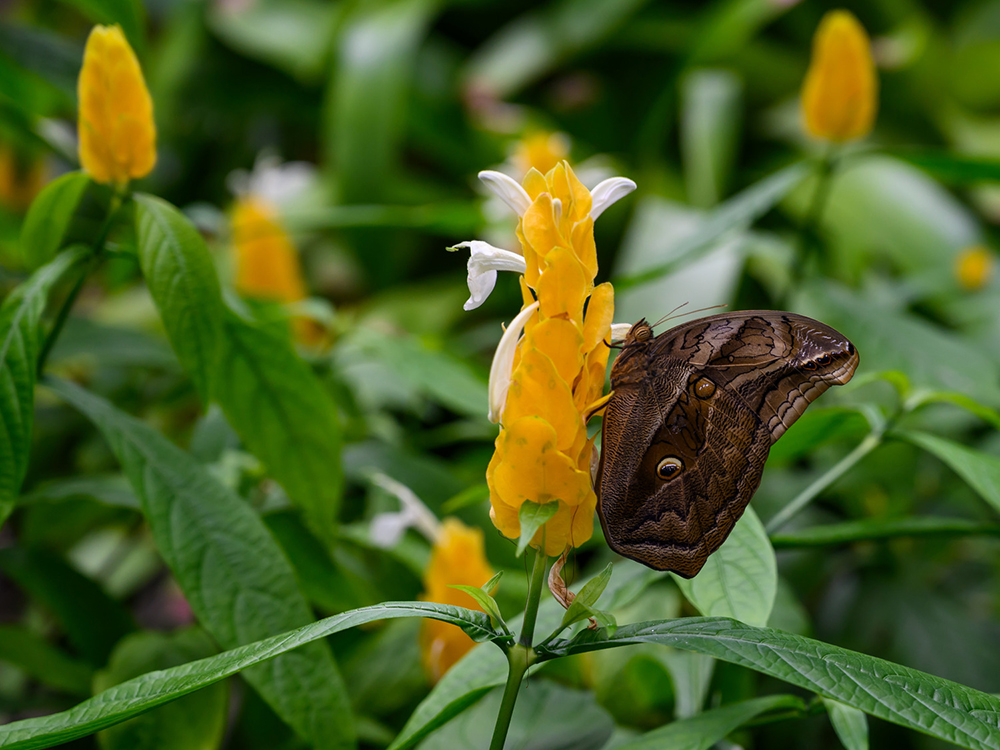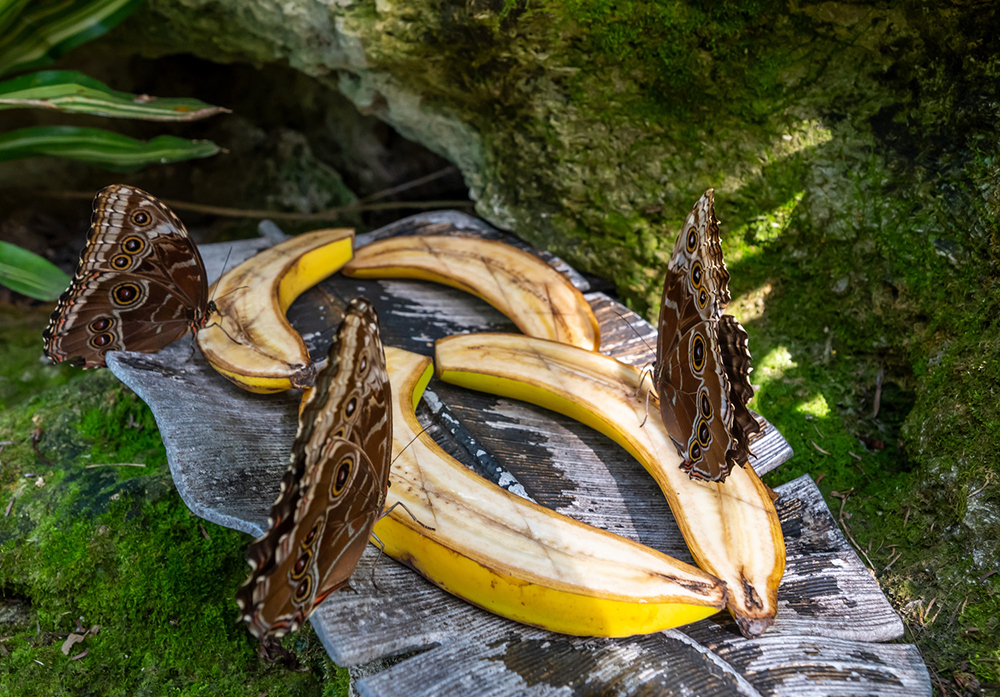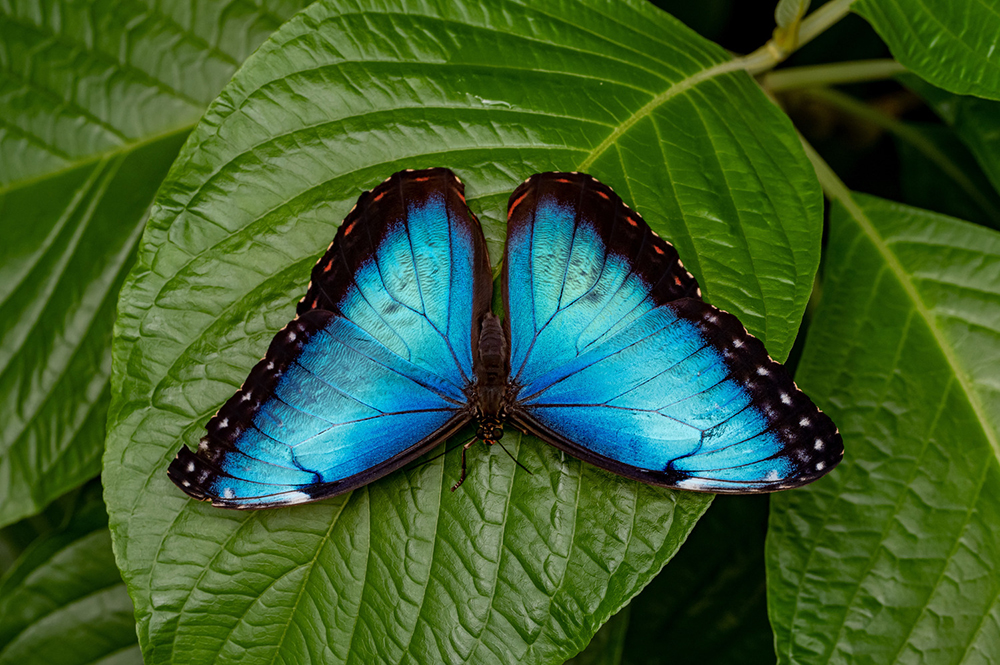Have you ever been through the Florida Museum of Natural History’s Butterfly Rainforest exhibit, mesmerized by the hundreds of beautiful creatures whizzing by and wondered, how do they get all these butterflies and moths in here?
The Florida Museum partners with sustainable butterfly farms around the world that regularly ship lepidoptera (butterflies and moths) to us. After painstaking work from our expert staff members to receive proper permits and ensure good relations with partnering farms, the museum places an order and waits patiently for the pupa to arrive.
Butterflies go through three life stages before emerging as the vibrant-winged beauties we know and love: 1) egg, 2) larva and 3) pupa.
- The egg and larval stages are both spent in their respective butterfly farms in countries ranging from Ecuador to Tanzania and the Philippines.
- There, larvae, or caterpillars, munch away at their favorite foods in preparation for the metamorphic transitions ahead.
- The pupal stage is spent in a chrysalis where the caterpillar’s body is broken down and reorganized into the structures of the butterflies we know and love. During this 10-to-15-day period, pupae do not need water, food or light, making it the perfect time for travel.
As they prepare for shipment, butterfly farm staff carefully place each pupa in protective shipping material and send them off to their new homes. The Florida Museum of Natural History receives shipments weekly, each containing up to 800 pupae!
Immediately upon arrival, it is all hands-on deck as museum staff work rapidly and meticulously to unpackage each pupa. The pupae are removed from their protective packaging and individually glued onto large sheets of paper to mimic the natural hanging position of chrysalides. The large sheets of paper are gently placed on the underside of shelves in our rearing lab, on full display to museum visitors. Depending on species, within a few days or weeks, adult butterflies will emerge from their chrysalides and prepare for flight.
The work does not stop there though. Keeping track of all the butterflies in the Butterfly Rainforest is a gargantuan task eased by the diligent labor of museum staff. Each pupa in the museum is inventoried upon arrival and prior to release into the Butterfly Rainforest.
While butterflies in the exhibit are free to mate, butterflies are very particular about the plants they choose to lay eggs on. To avoid egg-laying, museum staff has methodically planned the vegetation in the Butterfly Rainforest to ensure that desirable plants for egg-laying are not available.
Once the butterflies are mature enough to fly, staff release them into the exhibit where they are free to roam and bewilder the eyes of visitors who stand in awe and wonder, how do they get all these butterflies in here?
